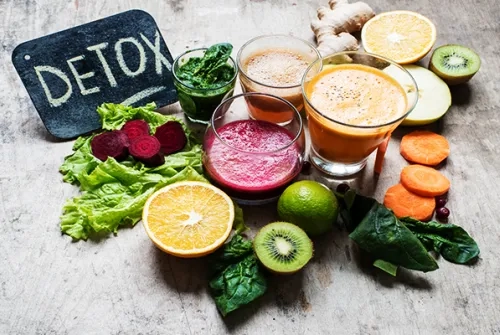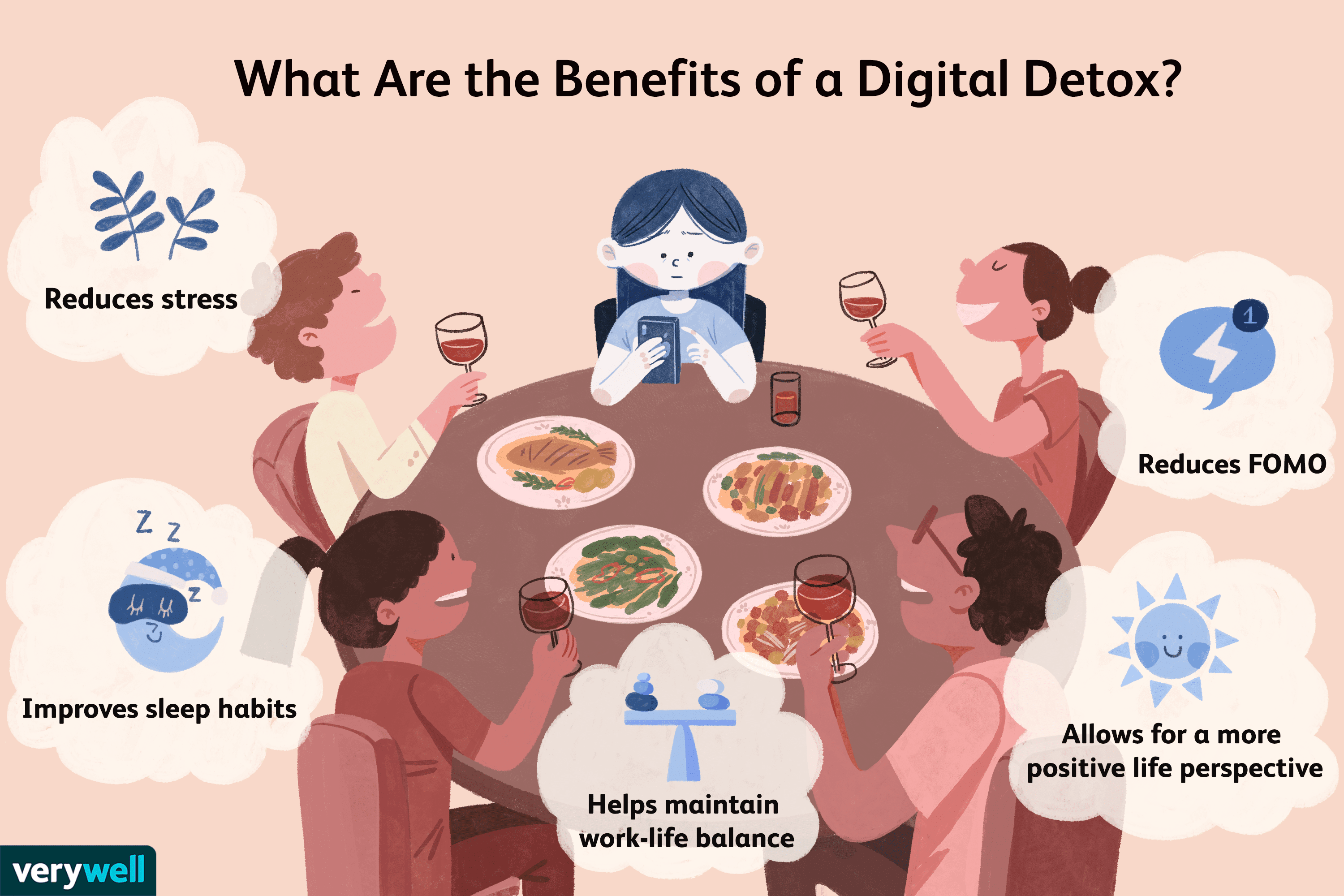Maintaining Balance After a Digital Detox: How to Stay Healthy and Mindful in a Tech-Driven World
In today’s hyper-connected world, a digital detox can feel like a necessary reset. The constant stream of information, endless notifications, and digital distractions can overwhelm our senses and lead to mental fatigue. Whether it’s to improve your mental health, regain focus, or simply reconnect with the world around you, a digital detox can provide the relief you need. However, the challenge doesn’t end once you’ve completed your detox. Maintaining balance in a tech-driven world after a detox is equally important.
In this article, we’ll explore how to sustain the benefits of a digital detox, integrate mindful technology use into your routine, and create a lifestyle that blends well-being with the benefits of digital connectivity.
:max_bytes(150000):strip_icc()/why-and-how-to-do-a-digital-detox-4771321-FINAL-d129381fa4524c5db792951fd9b987d2.png)
Why You Should Consider a Digital Detox
Before diving into the steps to maintain balance, it’s essential to understand why a digital detox is so beneficial. Here are the key reasons:
- Mental clarity: A digital detox allows your mind to clear out the digital clutter, reducing stress and anxiety caused by constant notifications and overwhelming information.
- Increased productivity: Disconnecting from devices for a set period can help you regain focus and increase productivity. It removes distractions, allowing you to accomplish more.
- Better sleep: The blue light emitted by screens can interfere with your sleep cycle. By taking a break from screens, you can improve your quality of rest.
- Improved relationships: A digital detox can encourage you to spend more time engaging with loved ones in person, helping to strengthen personal connections.
However, the key to sustaining these benefits is to create a healthy balance once the detox is over.
Steps to Maintain Balance After a Detox
The end of a digital detox marks the beginning of a new relationship with technology. By incorporating healthy habits into your daily routine, you can maintain a balanced lifestyle and continue to benefit from your detox.
1. Establish Tech-Free Zones
One of the easiest ways to maintain balance is by setting clear boundaries between technology and other aspects of your life. Establish tech-free zones in your home, such as the bedroom or dining area. These zones can serve as spaces where you can truly disconnect and enjoy time away from screens.
Example:
- Bedroom: Keep all electronics out of the bedroom to improve your sleep quality. Instead, opt for books, meditation, or journaling before bed.
- Dining Area: Make meal times tech-free to foster conversation and mindfulness while eating.
By designating areas for relaxation and disconnection, you ensure that your digital detox benefits carry on long-term.
2. Create a Tech Schedule
Rather than completely eliminating technology, which can be unrealistic for most people, try creating a tech schedule. This strategy involves allocating specific times during the day for checking emails, social media, or browsing the internet. By limiting your tech use to designated times, you can prevent it from taking over your day.
How to Implement a Tech Schedule:
- Set specific times during the day for checking emails (e.g., 9 AM and 4 PM).
- Limit social media use to 15 minutes twice a day.
- Dedicate “screen-free” hours, especially during meals, evenings, or weekends.
This structured approach helps you control your technology use while maintaining balance.

3. Engage in Offline Activities
After your detox, it’s important to stay engaged in activities that don’t involve screens. This is a great way to fill the void left by technology while fostering mindfulness and creativity. Consider activities such as:
- Reading books or magazines (try going for physical copies instead of e-books).
- Outdoor activities: Walking, hiking, biking, or practicing yoga outside to reconnect with nature.
- Creative hobbies: Drawing, writing, or knitting are excellent ways to keep your hands busy without digital distractions.
- Socializing: Meet up with friends or family in person for a meal or activity.
These activities promote balance by helping you shift your focus away from devices and toward more fulfilling, offline experiences.
4. Practice Mindful Technology Use
While technology itself is not inherently bad, its misuse can lead to negative outcomes. Practicing mindful technology use means being intentional about when and how you use digital devices. This includes:
- Being aware of how much time you’re spending on your devices and how it makes you feel.
- Limiting distractions while using technology (e.g., turning off unnecessary notifications).
- Using apps or features on your devices that promote mindfulness (e.g., screen time trackers, do not disturb modes).
Mindful use helps prevent technology from becoming a mindless habit and keeps you more present in your daily life.
5. Cultivate Offline Relationships
Technology can sometimes isolate us from those around us, even when we’re physically present. After a digital detox, it’s important to prioritize offline relationships and nurture human connections. Here are some ideas:
- Schedule regular quality time with family and friends without any digital distractions.
- Have a no-phone rule during social gatherings, meetings, or family meals to ensure everyone is present.
- Join community groups or activities that encourage face-to-face interactions.
Human connection is essential for mental well-being, and cultivating it offline can ensure you continue to experience the positive effects of a digital detox.
6. Set Digital Detox Goals
Setting goals for your post-detox lifestyle helps you stay on track. Ask yourself questions like:
– How much time do I want to spend on screens each day?
– What activities do I want to prioritize?
– What boundaries do I need to set for a healthier digital lifestyle?
Creating goals helps you stay intentional with your digital habits and ensures that you don’t fall back into old patterns.
Common Challenges and How to Overcome Them
While maintaining balance after a detox sounds simple, there are challenges that can make it difficult to stick to a new routine. Here are some common challenges and ways to overcome them:
1. The Pull of Social Media
Social media is often the hardest thing to disconnect from. The fear of missing out (FOMO) can make it tempting to check your feed frequently.
Solution:
Use a social media app blocker or set specific time limits on your apps to avoid the temptation of scrolling mindlessly.
2. Work and Digital Overload
In today’s remote-working world, work often requires constant digital interaction, making it hard to stay balanced.
Solution:
Create clear work hours and stick to them. After work, engage in tech-free activities like reading, exercising, or socializing.
3. Reconnecting with Technology After the Detox
After a detox, there’s a tendency to overindulge in technology after a period of abstinence.
Solution:
Ease back into your digital habits slowly. Stick to the tech schedule you created and continue to engage in offline activities to prevent becoming overwhelmed again.
FAQs
Q1: How long should a digital detox last?
A digital detox can last anywhere from a few hours to several days or weeks, depending on your needs. The key is to commit to a period where you can fully disconnect and experience the benefits.
Q2: Can a digital detox improve mental health?
Yes, many people report reduced stress, anxiety, and improved mental clarity after completing a digital detox. It allows for a break from constant notifications and digital noise.
Q3: Is it necessary to completely avoid technology after a detox?
Not necessarily. It’s about maintaining balance. You can continue using technology but in a mindful, intentional way.
Q4: Can a digital detox help improve relationships?
Yes! By disconnecting from technology, you make space for more meaningful, face-to-face interactions with the people around you.
Conclusion
Maintaining balance after a digital detox is about finding harmony between technology and well-being. By setting boundaries, being mindful of your screen time, and prioritizing offline activities and relationships, you can ensure that the benefits of your detox are long-lasting. Embrace the power of mindfulness and create a routine that serves both your digital needs and your mental health, allowing you to thrive in a tech-driven world.


